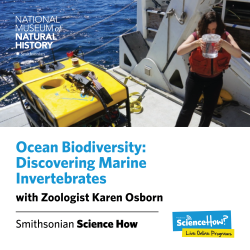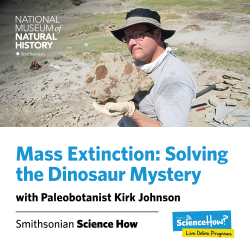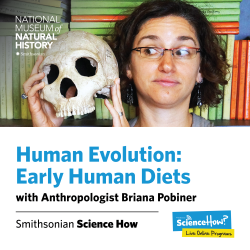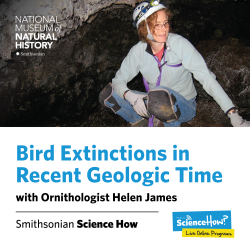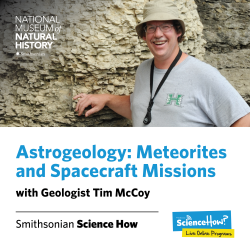Smithsonian Science How's collections
Smithsonian Science How Webcasts
<p>Welcome to the <em>Smithsonian Science How</em> webcast archives! We're putting Smithsonian experts in every classroom with webcasts aligned with national science standards. These webcasts originally aired live from the Q?rius theater in the National Museum of Natural History in Washington, D.C. Here you can access past programs and related teaching resources. <a href="https://naturalhistory.si.edu/education/distance-learning/smithsonian-science-how-webcast-archives">https://naturalhistory.si.edu/...</a></p>
 Smithsonian Science How
Smithsonian Science How
24
Ocean Biodiversity - Discovering Marine Invertebrates
<p>This Smithsonian Science How learning collection, from Q?rius at the National Museum of Natural History, is part of a distance learning program at <a href="https://naturalhistory.si.edu/education/distance-learning">https://naturalhistory.si.edu/...</a> This collection focuses on the biodiversity of tiny, deep ocean life. Targeted at middle schoolers, the collection invites students into an authentic understanding of how biologists find, classify, and name microscopic animals that live in the open ocean. Zoologist Dr. Karen Osborn is featured as an expert explainer. The collection includes an interactive webcast video with discussion questions, cross-cutting activities, an independent project, and other resources for teachers and students.</p>
<p><strong>Key Terms:</strong></p>
<p><em>marine zoology, mid-water, pelagic, invertebrate, biodiversity, DNA barcoding, taxonomy</em></p>
<p><strong>Key Concepts:</strong></p>
<ul><li>Mid-water ecosystem biodiversity</li><li>Distribution of mid-water animals</li><li>Ecology and adaptations of ocean invertebrates</li><li>Ocean biodiversity and its global importance</li><li>Technology used by marine invertebrate zoologists</li></ul>
 Smithsonian Science How
Smithsonian Science How
13
Mass Extinction - Solving the Dinosaur Mystery
<p>This Smithsonian Science How learning collection, from Q?rius at the National Museum of Natural History, is part of a distance learning program at <a href="https://naturalhistory.si.edu/education/distance-learning">https://naturalhistory.si.edu/...</a> This collection focuses on the end-Cretaceous extinction event that included dinosaurs. Targeted at middle schoolers, the collection invites students into an authentic understanding of the evidence for and causes of the mass extinction. Paleobotanist Dr. Kirk Johnson is featured as an expert explainer. The collection includes an interactive webcast video with discussion questions, cross-cutting activities, an independent project, and other resources for teachers and students.</p>
<p><strong>Key Terms:</strong></p>
<p><em>paleontology, dinosaur, fossil record, mass extinction, asteroid, Cretaceous period, K-T boundary</em></p>
<p><strong>Key Concepts:</strong></p>
<ul><li>Extinctions at the end of the Cretaceous</li><li>Causes of mass extinction events</li><li>Interpreting ecosystem changes through fossils</li><li>Reconstructing ancient environments</li><li>Technology used by paleontologists</li></ul>
 Smithsonian Science How
Smithsonian Science How
14


